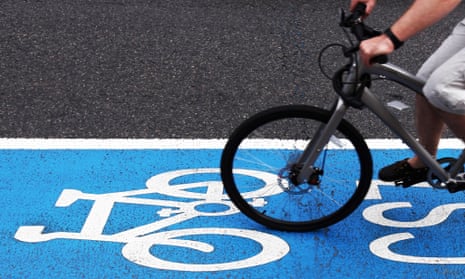Cities in which residents are physically active have a big advantage over their more sedentary rivals, with better economic productivity, higher property values and improved school performance, as well as a healthier population.
In an increasingly globalised, competitive and mobile world, cities have an economic imperative to promote walking, cycling and public transport, as well as increasing the amount of green space and curbing car use, according to a report from the University of California.
The research examined more than 500 existing studies from 17 countries to seek an overall picture of the effect of increased physical activity on a city. It found in particular that schemes to promote walking and cycling had a massive impact, with one UK study finding local trade can be boosted by up to 40% in an area where more people walk.
Overall, the academics concluded, walking and cycling projects return an average of £13 ($20) in economic benefit for every £1 ($1.50) invested.
The boost comes from a variety of means, including more trade for local shops, less traffic congestion and reduced pollution. More active employees take on average a week less off work a year, with huge, wider benefits for overall public health.
A University of Cambridge study on the health impact of sedentary living, published this year, estimated that almost 700,000 people could be dying a year in Europe owing to lack of exercise. One paper considered by the University of California team estimated that investment in cycling schemes in the US city of Portland could save almost £8bn by 2040 in better public health.
The 80-page paper aggregating the research, which also offers city leaders ideas on how to make their populations more active, is being released before a conference on the subject in in Bristol. The English city has heavily promoted active travel in recent years, and is among nine places examined in the report as models for others.
Chad Spoon, from the University of California’s Active Living research unit, said the hope was the report would “open the eyes of government leaders to the many important benefits of designing cities to support active living”. He added: “A city’s ability to compete depends on an active population. The research is clear on this – it shows how an active city can be a low-cost, high-return investment.”
The paper also lists a series of other benefits of a move to active living, for example research suggesting that street not lined by parked cars have significantly less crime, that active students tend to perform better at school and that more physical activity boosts overall mental health and wellbeing.
It suggests a series of ways city leaders can help in this process, with examples such as providing more parks and open spaces; providing bike lanes and public bike schemes; and helping ensure children live closer to their schools.

Comments (…)
Sign in or create your Guardian account to join the discussion